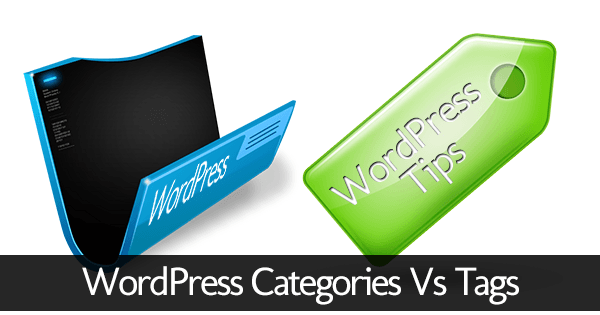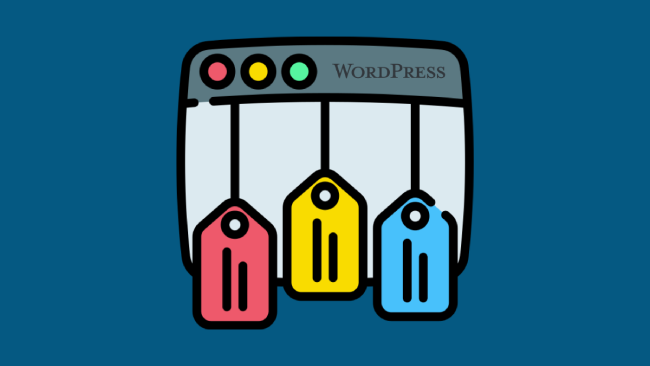WordPress categories or tags? Many are unsure which of these they should use as their main method of organizing the content on their WordPress blog or website. Is one or the other better for your SEO? How do you best meet the needs of your visitors? Most people make an issue out of something that is very simple to explain, and just as simple to understand if explained clearly.

The two terms will be explained here in terms of two major topics: home furniture and later, pets. Let’s say you have a WordPress blog on furniture and are unsure of the difference between categories and tags. In general terms, taking a book on furniture as an example, the categories would be the chapters, and the tags the index list at the back.
If you want to find information about dining room furniture, you would check up the dining room furniture chapter (=category), but if you wanted information about tables in general, you would up tables in the index (=tag). Your dining room and coffee tables would appear under different categories (‘dining room’ and ‘living room’ furniture), but each would be included in the ‘tables’ tag.
Hierarchical Taxonomy
Taxonomy is the science of indexing and categorizing, and a hierarchical taxonomy is one that that can have levels within a category. In the discussion between WordPress categories or tags, categories are hierarchal, while tags are not.
For example, within the category of bedroom furniture you can have sub-categories such as beds, armoires, dressers and so on. This is not the case with tags. What that means is that visitors can follow your hierarchy of categories as a linking structure within your blog, while tags point to the possibly disconnected individual pages that contain the tagged keyword.
Categories therefore offer an effective means of navigation on your site, and if you have a large number of pages and blog posts, visitors can use these to find the type of information they are seeking. It is a better method of navigation that searching through the usual chronological order of blog posts, or of hunting through all references to ‘tables’ when seeking information on ‘coffee tables.’
SEO Advantages of Categories
To help your visitor navigate round your site, therefore, you can set up a system of categories and subcategories as explained with the bedroom furniture example above. This is similar to the silo structure of a regular website where bedroom furniture would form the silo, and individual types of bedroom furniture would be accessible from within that silo, but not directly from the Home Page.
This enables you to maximize the internal PageRank points for the more important pages and increase the potential ranking for these pages. This helps to prevent a post or page on dressers ranking above a post or page devoted to bedroom furniture in general. However, for most sites this is a minor SEO advantage, and ranking advantages are usually minimal if they exist at all.
SEE ALSO: Most Popular and Useful SEO Plugins for WordPress SEO.

Tags are better for small blogs on narrow topics, where a visitor might be seeking a specific aspect of that topic. For example, a blog dealing with mattresses might have categories relating to innersprings, pocket springs and memory foam. However, a visitor might be more interested in reading about the relative comfort of each, when the tag ‘comfort’ would be more useful to them.
So categories might be useful to those seeking the type or construction of mattresses, while the tag would be more useful to those seeking qualities associated with them. That is one example where both categories and tags are equally useful and therefore equally important to use.
Fundamentally, you should use both categories and tags in your blog. Your categories should not be too highly defined, but define major aspects of your niche. Sub-categories can be used to narrow down these definitions.
Taking a different niche as an example, a category in a ‘Home Pets’ website could be ‘Dogs,’ a sub-category ‘Training’ and a third level could be ‘Police Dog Training.’ Your tags could be ‘Pets’, ‘Training’, and ‘Police Dogs.’
If you use tags, and click on ‘training’ you will get training of dogs, rabbits and cats (you wish!) and any other animal. Clicking on ‘Dogs’ you will find information on dogs in general. So while tags provide you with specific information on a broad range of pets, categories will give you a broad range of information on a specific pet.
Categories Can be Better for Large Sites
However, this ‘category’ information can be narrowed down using the hierarchy of links, while tags cannot have a hierarchy. The upshot is that visitors find categories easier to use with large websites or blogs with large numbers of posts on a variety of categories (such as ‘Pets’), while tags are easier with blogs devoted to a narrow niche (such as ‘Dog Training’).
The answer to the fundamental question regarding WordPress categories or tags is that they make no difference to the SEO of your bog or website, assuming you have one of them or both. However, it can make a difference to the way your visitors can find information depending upon your niche and the size of the site.


Leave a comment
Have something to say about this article? Add your comment and start the discussion.